2020 – Sharp Lark, Post and Photos by Adrian Wolf
Adrian Wolf has been working on habitat restoration projects for endangered birds for over 25 years. He attributes the inspiration to pursue this profession to his undergraduate professor at the University of California, Irvine. For his Master’s Degree at the Evergreen State College, he climbed up into the forest canopy of old growth Pacific Northwest trees to study the importance of epiphytic resources for birds. Currently, he is a Conservation Biologist with the Center for Natural Lands Management charged with restoring and recovering the imperiled avifauna of prairie oak habitats.
2020 – Sharp Lark
20/20 is often associated with “clarity or sharpness of vision”. Well, this couldn’t be more apt during this remarkable time in our lives. This pandemic of 2020 has certainly cast light on all the things we too often take too much for granted to see clearly; and at times the necessary changes and adjustments have felt quite sharp indeed. This is also apparent in the breath and wild things of the natural world. Yet, on this matter, the changes have been for the better.
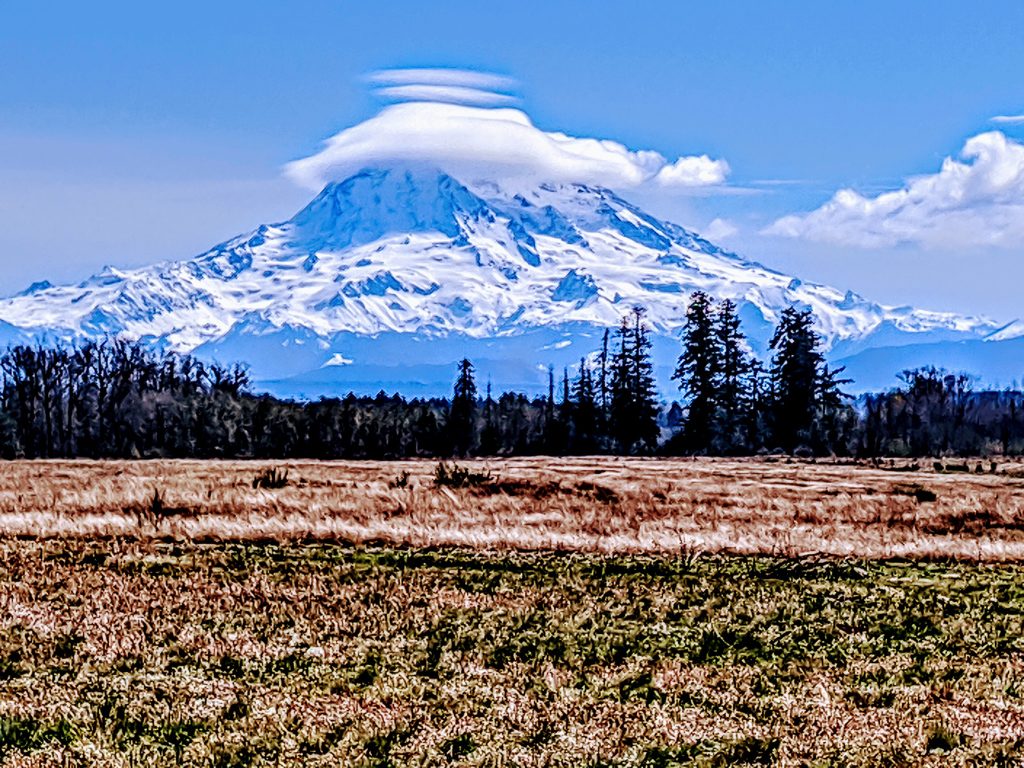
Mount Rainier (Tahoma) from the Streaked-Horned Lark restoration area. Photo by Adrian Wolf
There is talk of dolphins returning to the canals in Venice, evening stars noticed again in densely populated cities, and even the Olympic Mountains seen daily from the I-5 corridor. The pause of everyday life has given nature a bit of respite, a time to breath, a break from the hustle and bustle of us bipeds and our machines.
I feel that the prairies of South Puget Sound are also benefiting from this lull in air and noise pollution. The flowers seem more colorful, the bird songs more robust, the raindrops sweeter, the oak lichens more enthusiastic and the views of Mount Rainier as sharp and clear as can be.
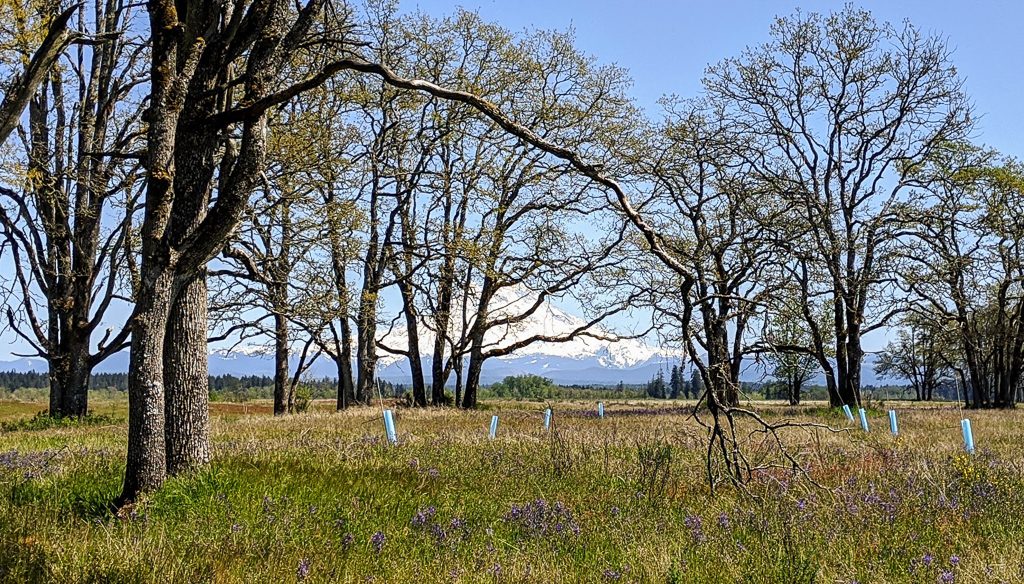
Oak Trees. Photo by Adrian Wolf
The streaked horned larks have returned to the prairies of JBLM and their numbers appear greater than that of last year. Their color bands are sharp and clearly indicate their place and time of birth. Their songs trickle into the clear skies, accompanied by the buzz of savannah sparrows and the joyful accolades of the western meadowlarks.
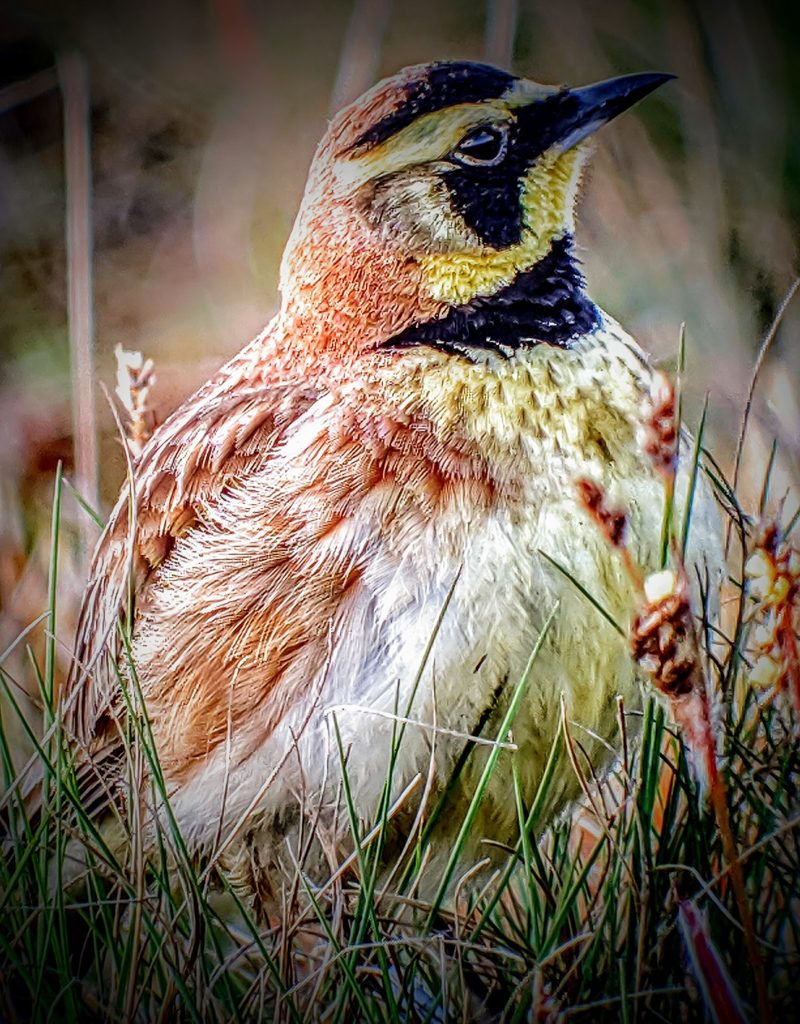
Streaked- Horned Lark. Phto by Adrian Wolf
At one prairie on base, the larks are now accompanied by Taylor’s Checkerspot butterflies. Unassisted, the scaled winged insects dispersed and colonized this new location, and it is no surprise after observing all the nectar and larval foods available. It is clearly a time of plenty at this location (see photo of Tahoma watching over her lowlands erupting with paintbrush). The apparently sharp increase in lark numbers and the arrival of the butterfly is due, in part, to the tremendous improvement in native plant cover, a result of dedicated folks at CNLM and JBLM burning, weeding, seeding and planting.
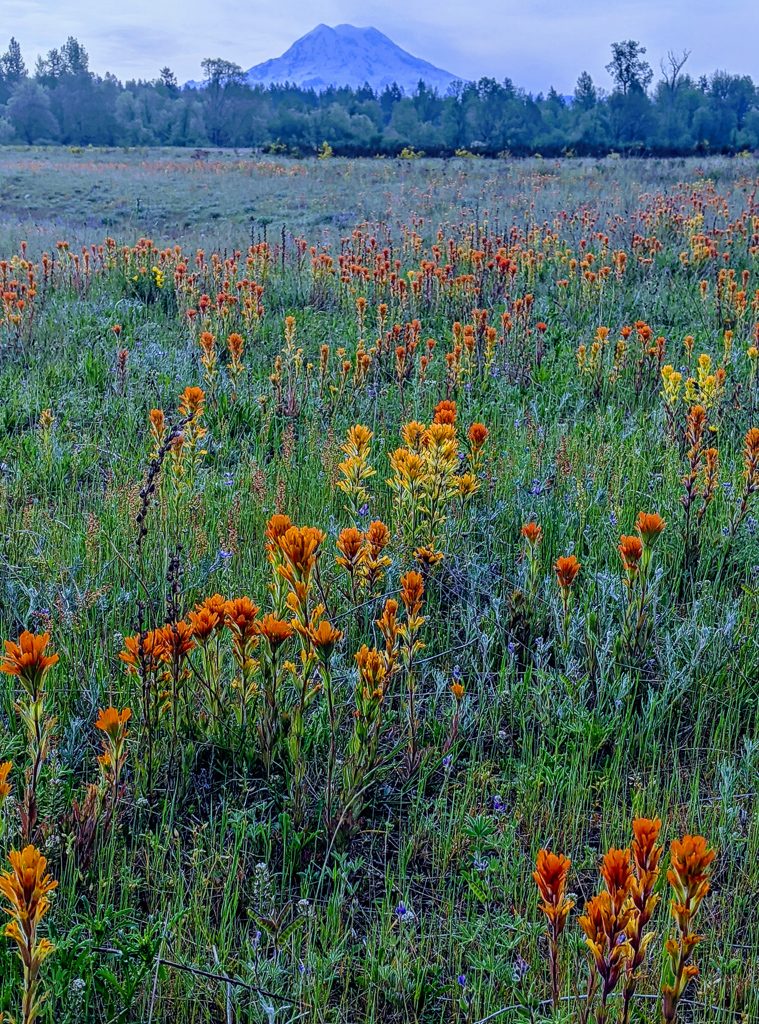
Tahoma watching over her lowlands erupting with paintbrush Photo by Adrian Wolf
It is too early to estimate the exact number of breeding larks because they are still flocking and haven’t settled into territories. Although, in general, these birds don’t really have sharp territorial boundaries, in fact their territories often overlap. When I started working with these birds 10 years ago, the prairie I speak of was dominated by Scots broom and fewer than 10 pairs were all confined to the roadside edges. The landscape context has changed sharply with the return of more native habitat, and I wouldn’t be surprised if the number of pairs this year is triple that of 2011. Wouldn’t that be an unexpected sharp and clear vision. 2020 – there is hope yet.
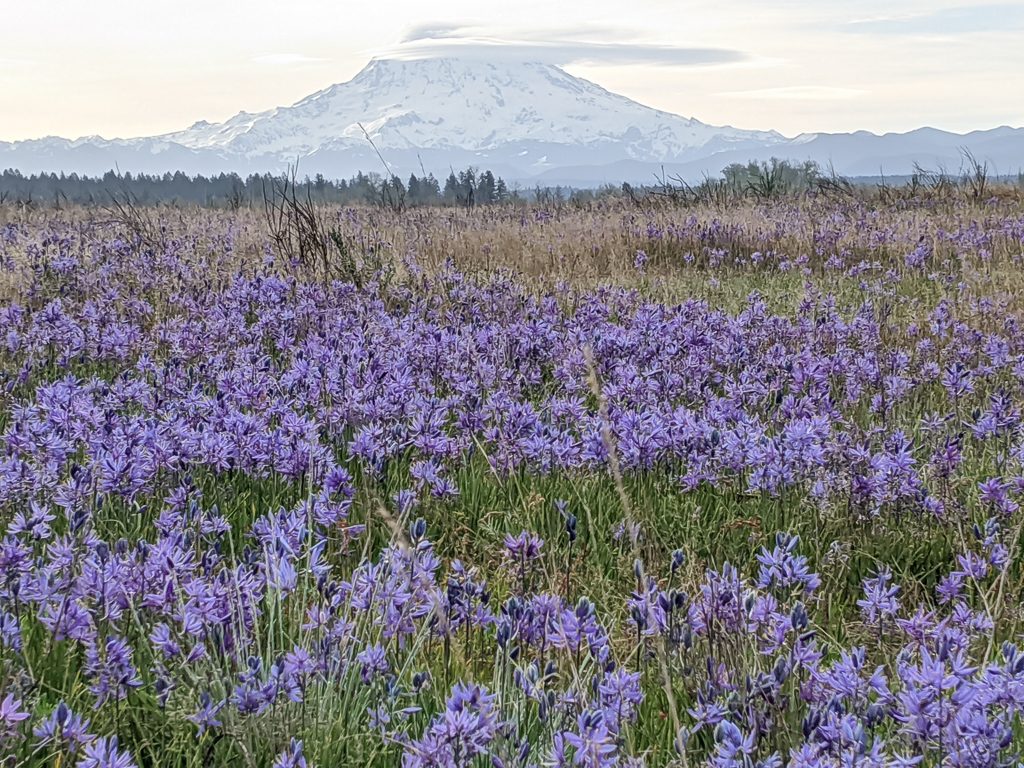
Mount Rainier from the Lark Restoration Area. Photo by Adrian Wolf
Stay safe
Adrian

